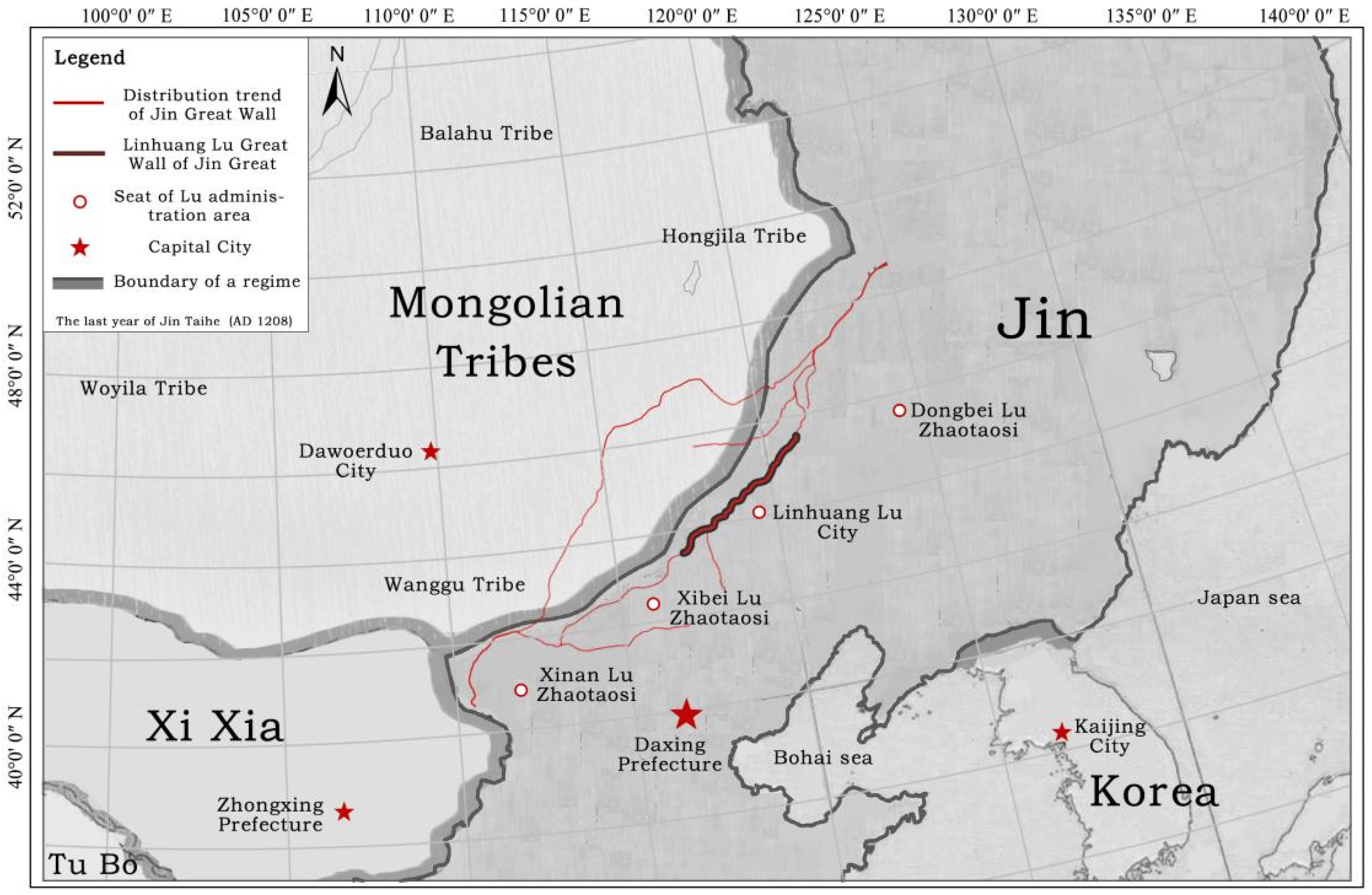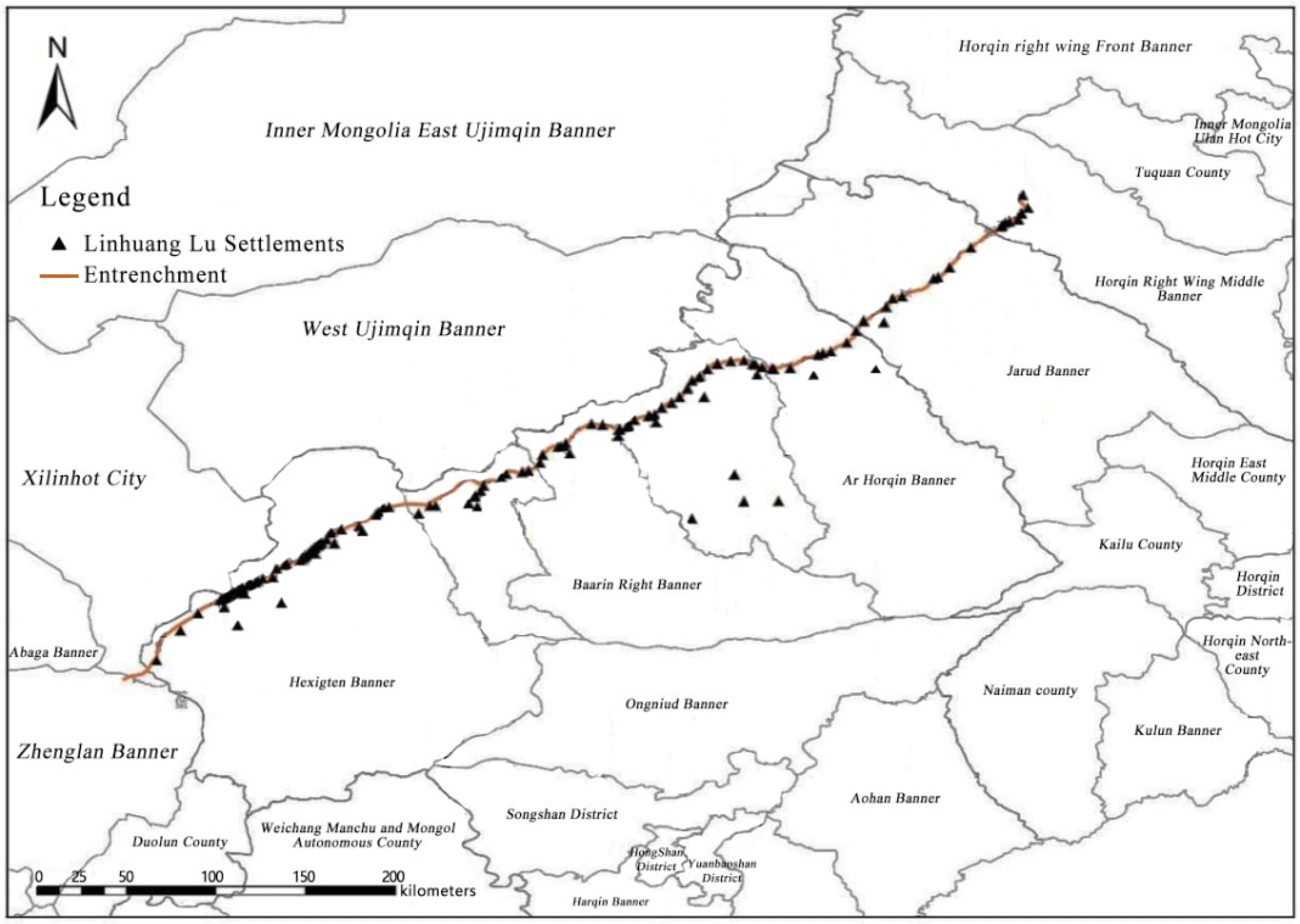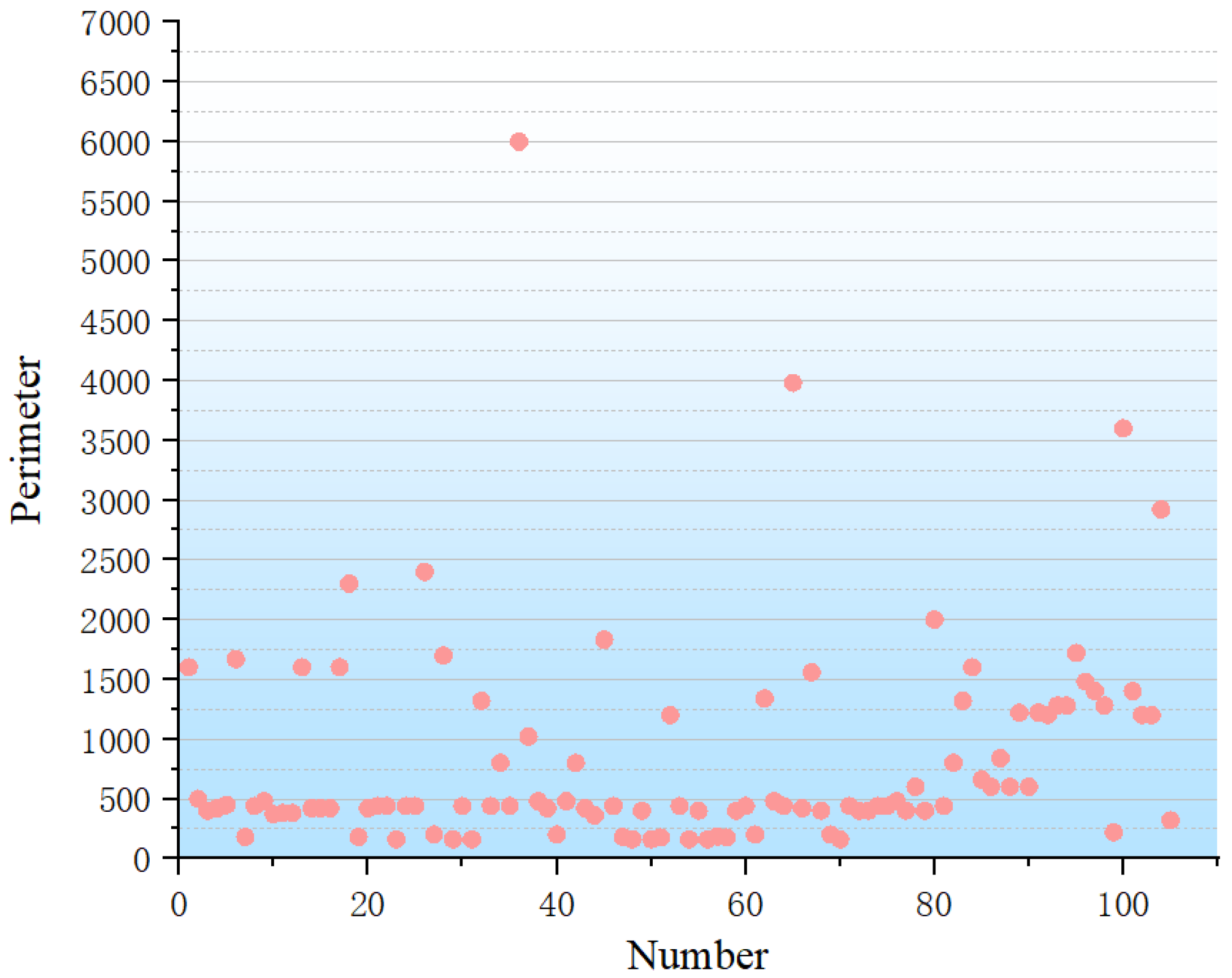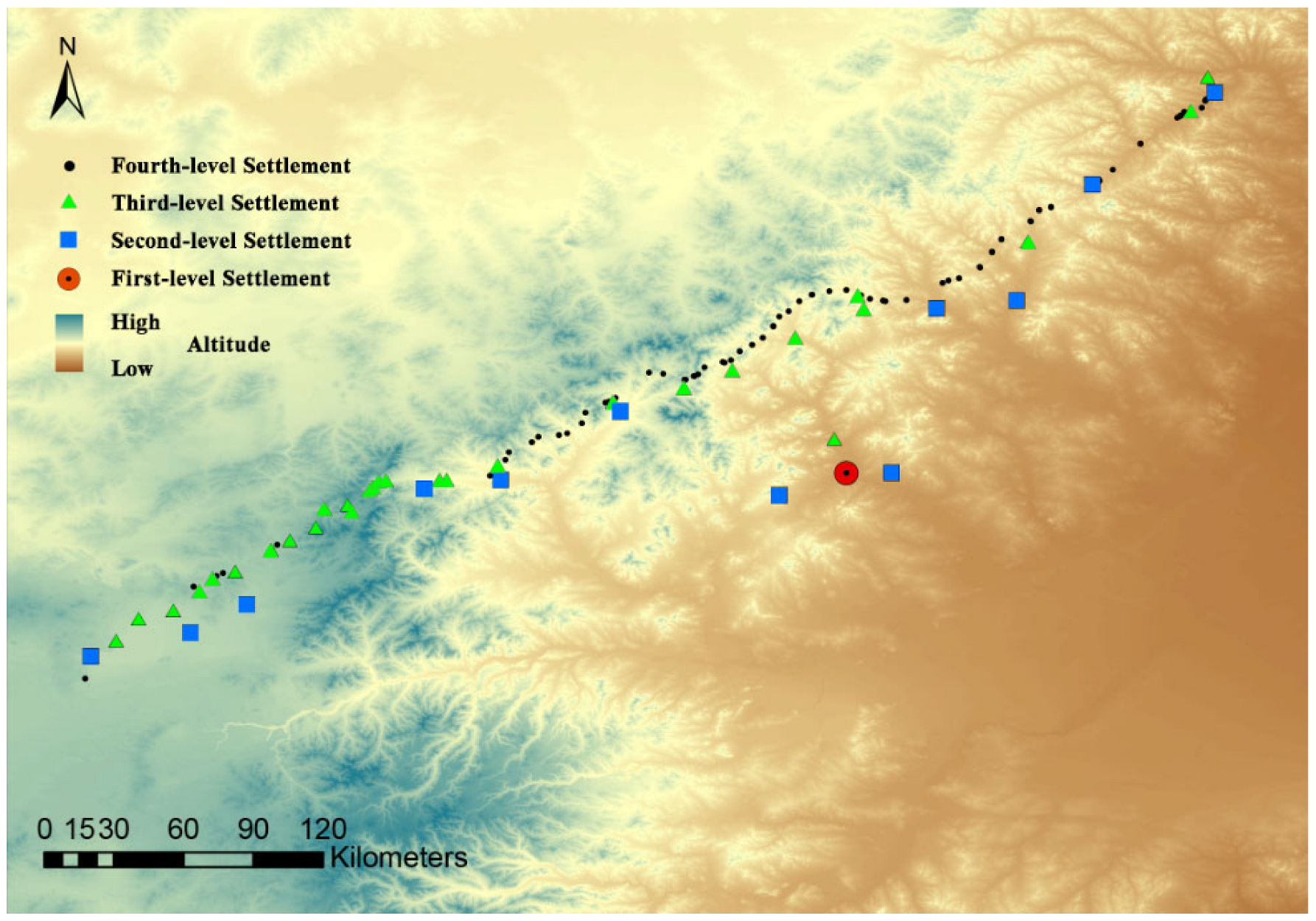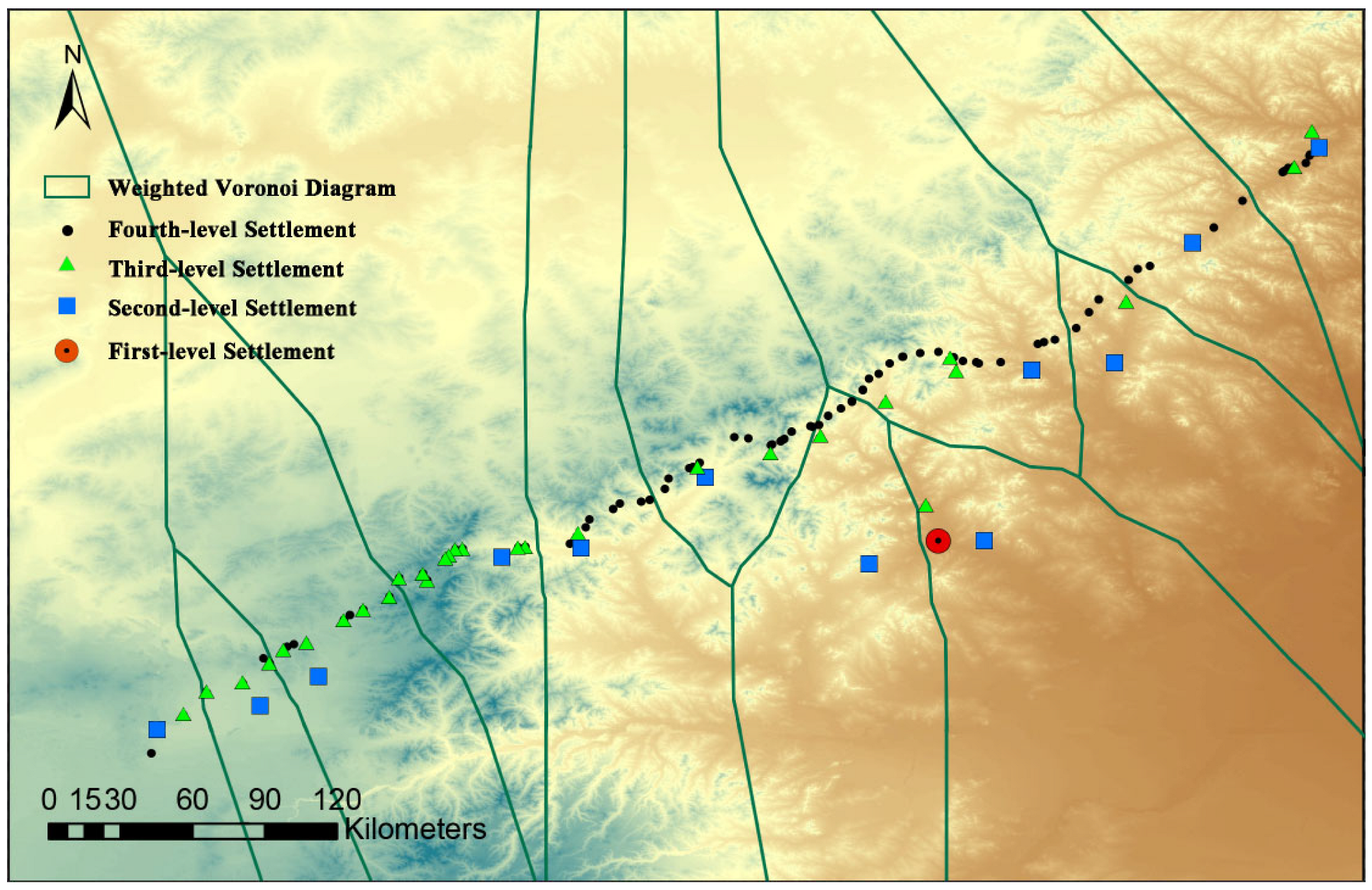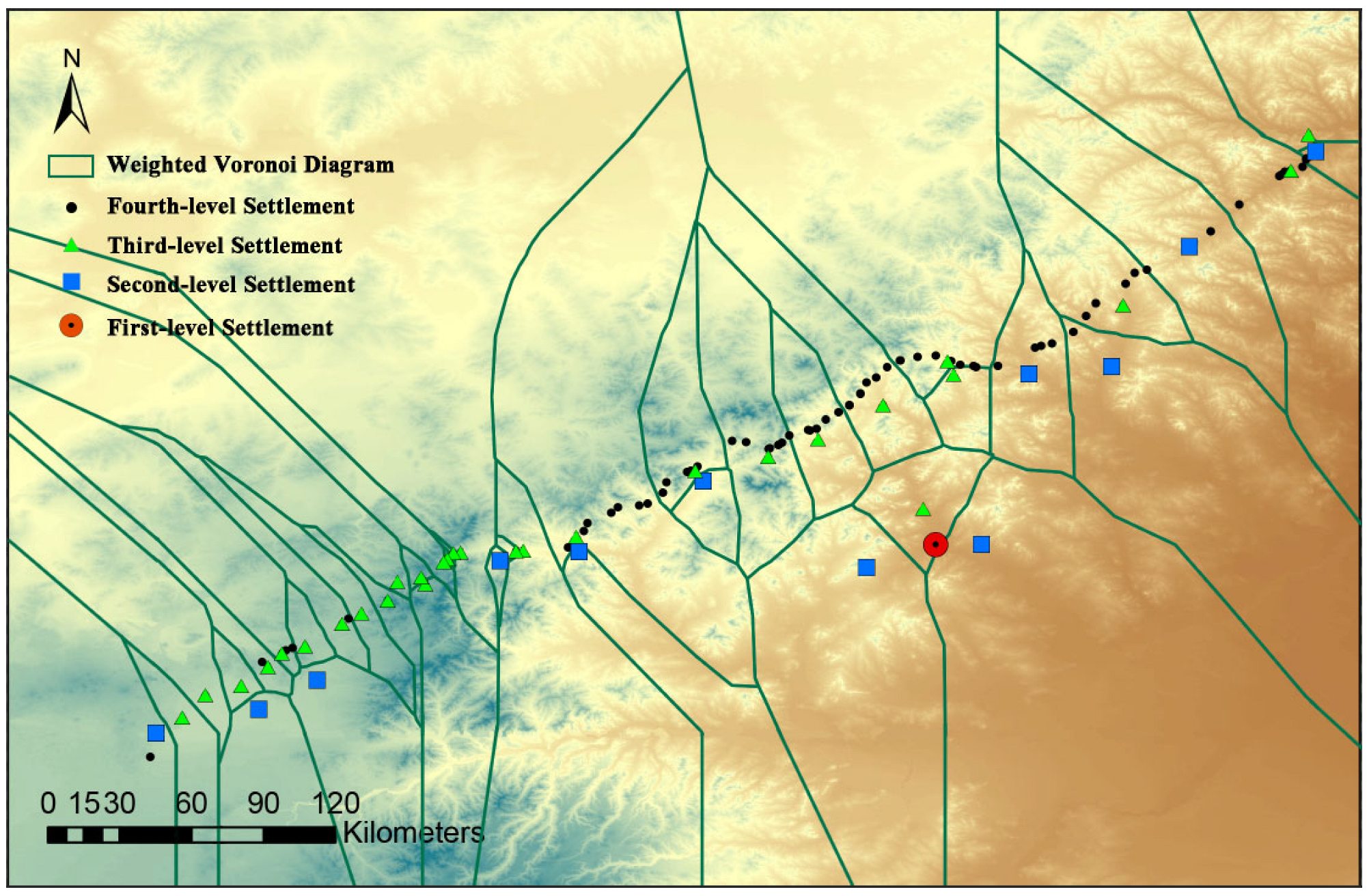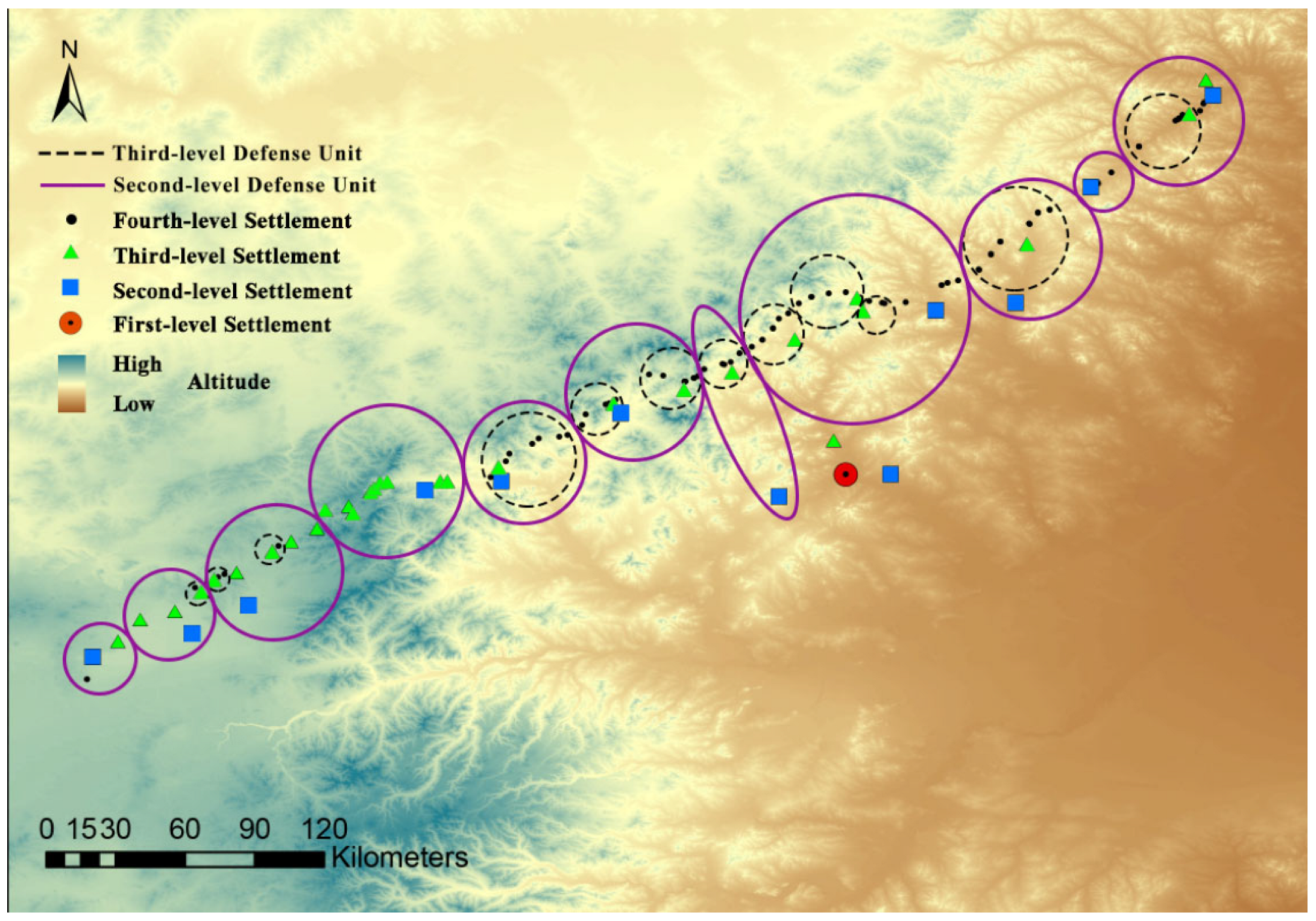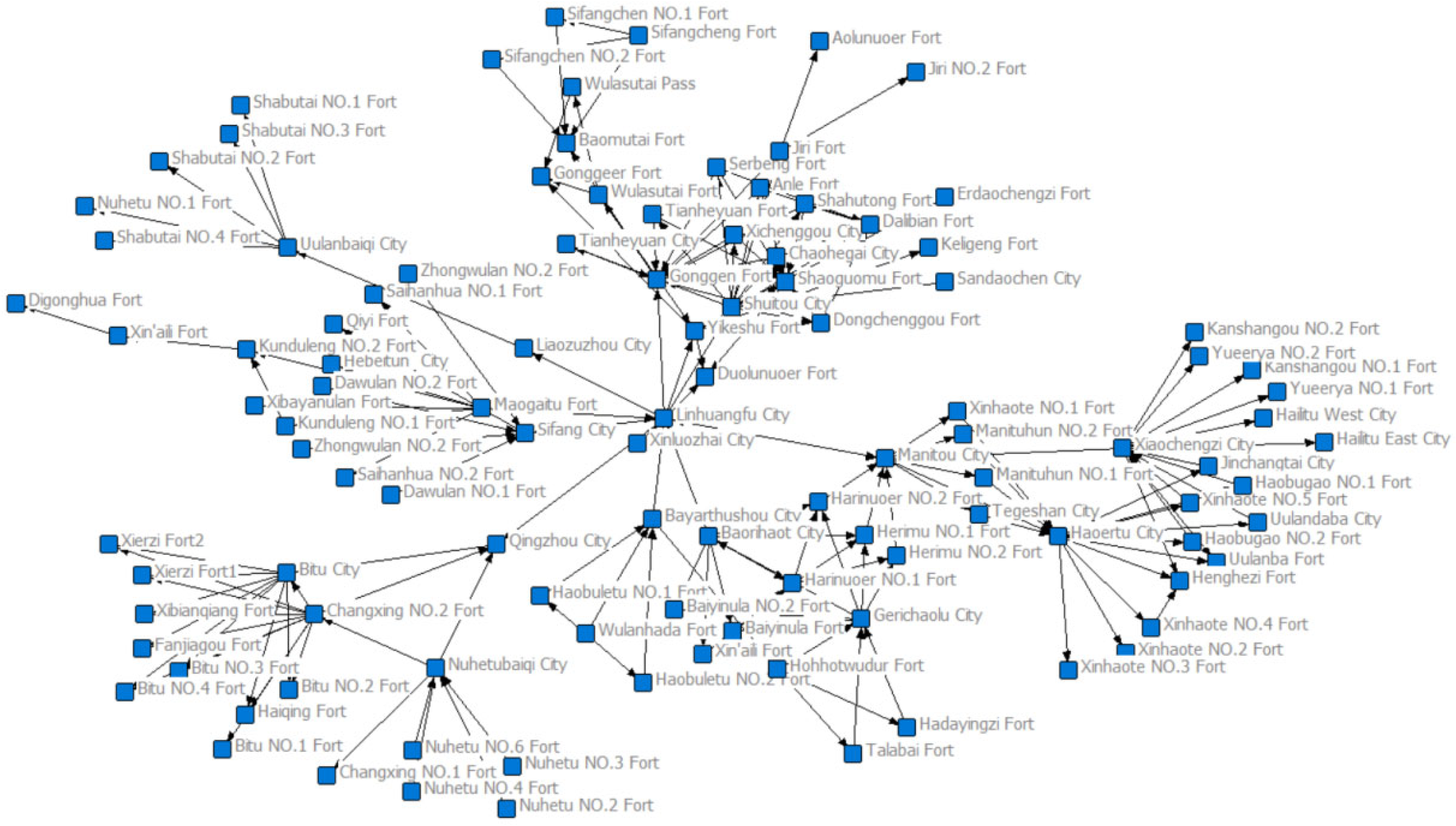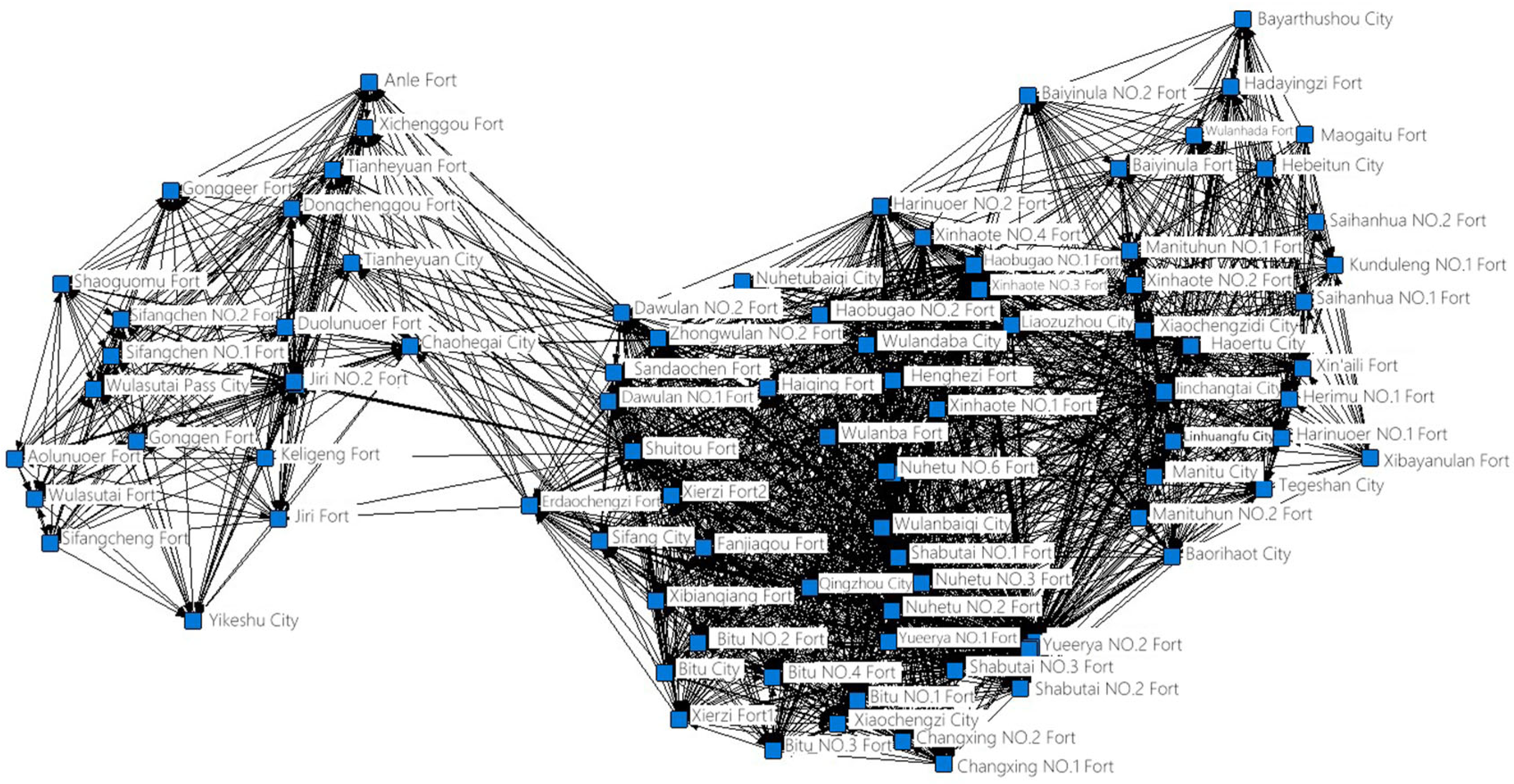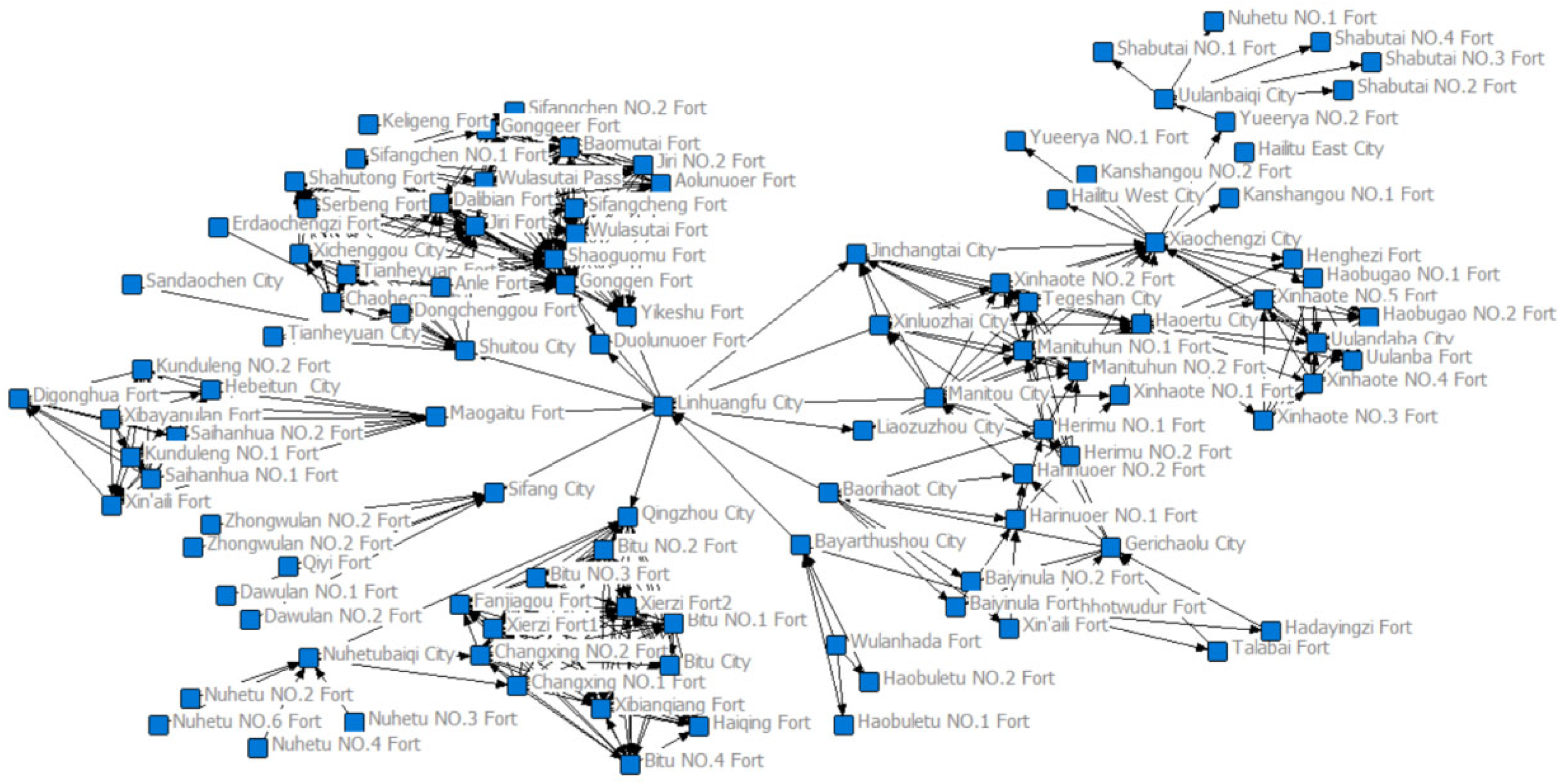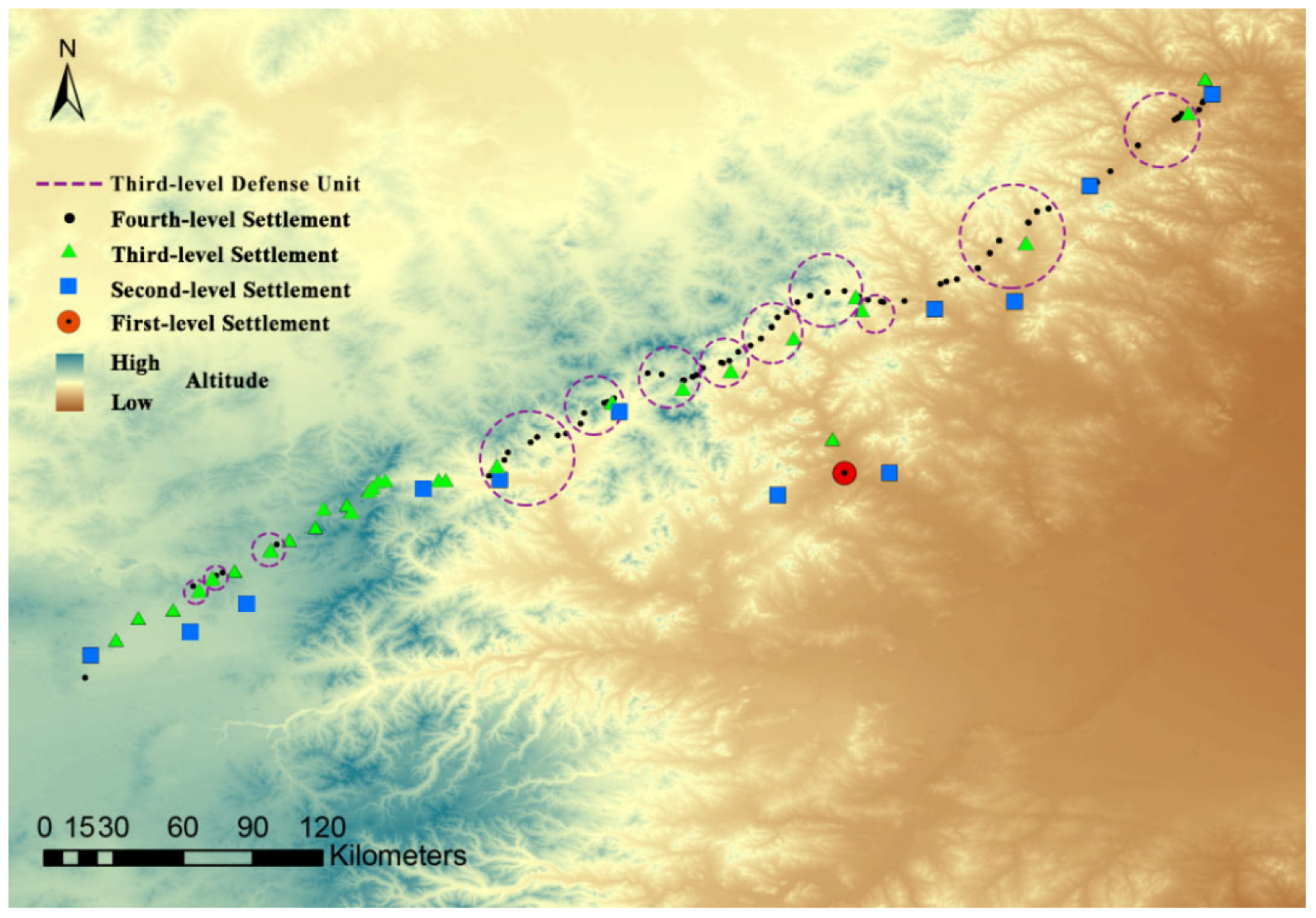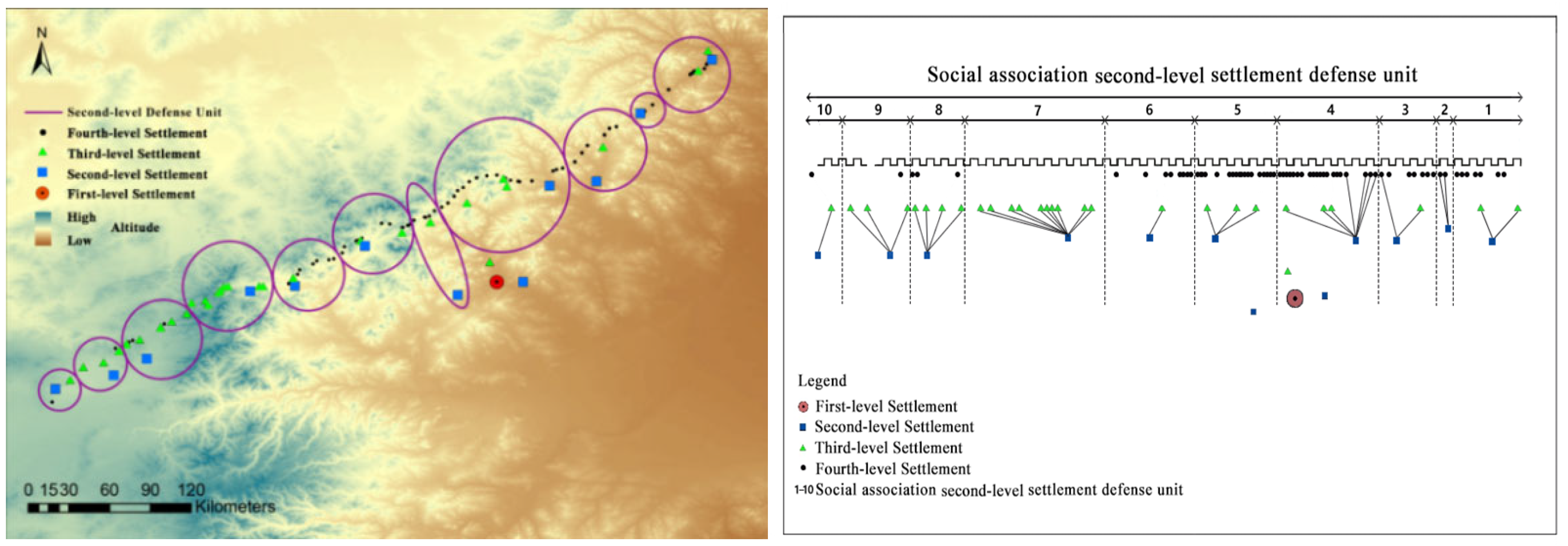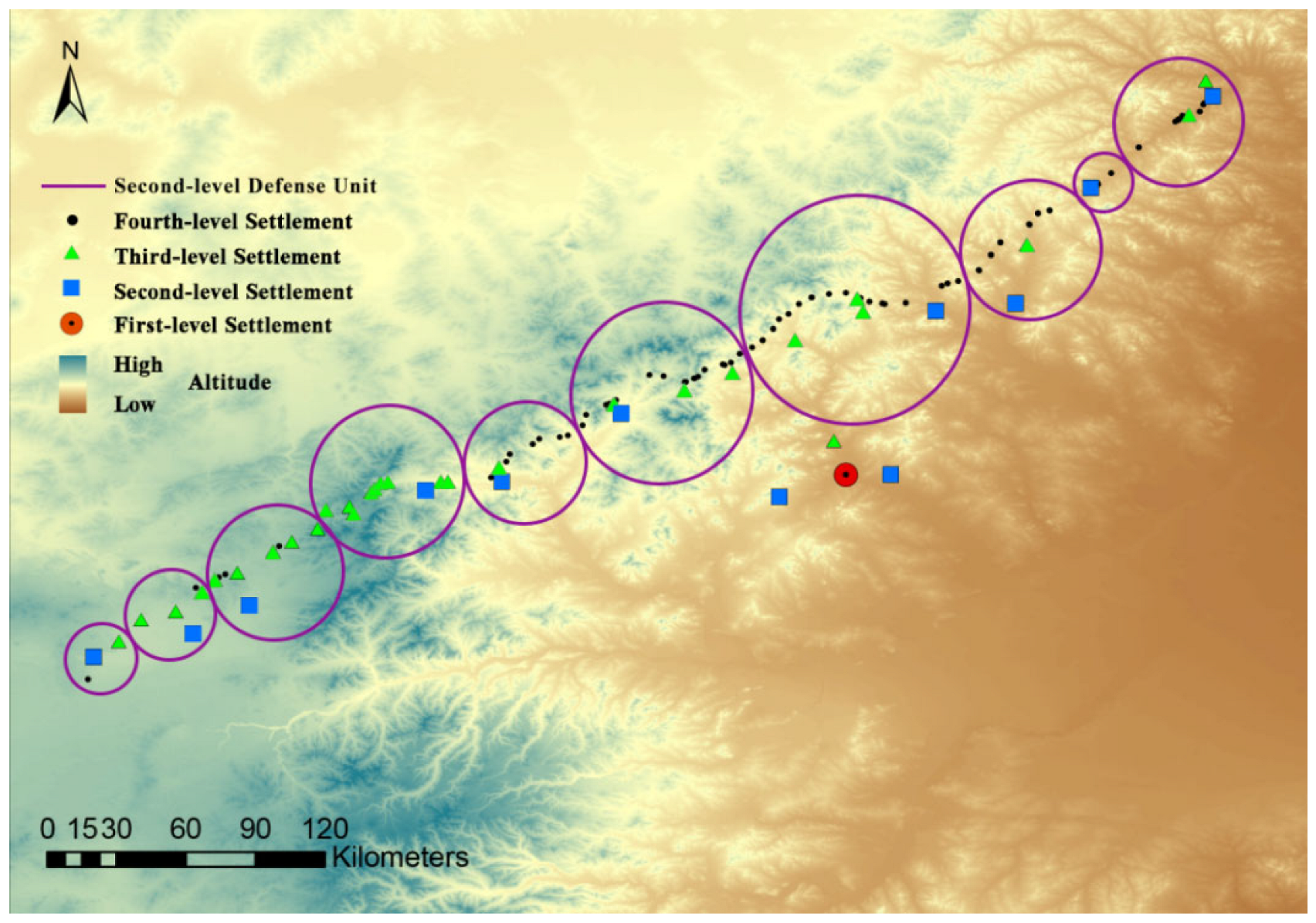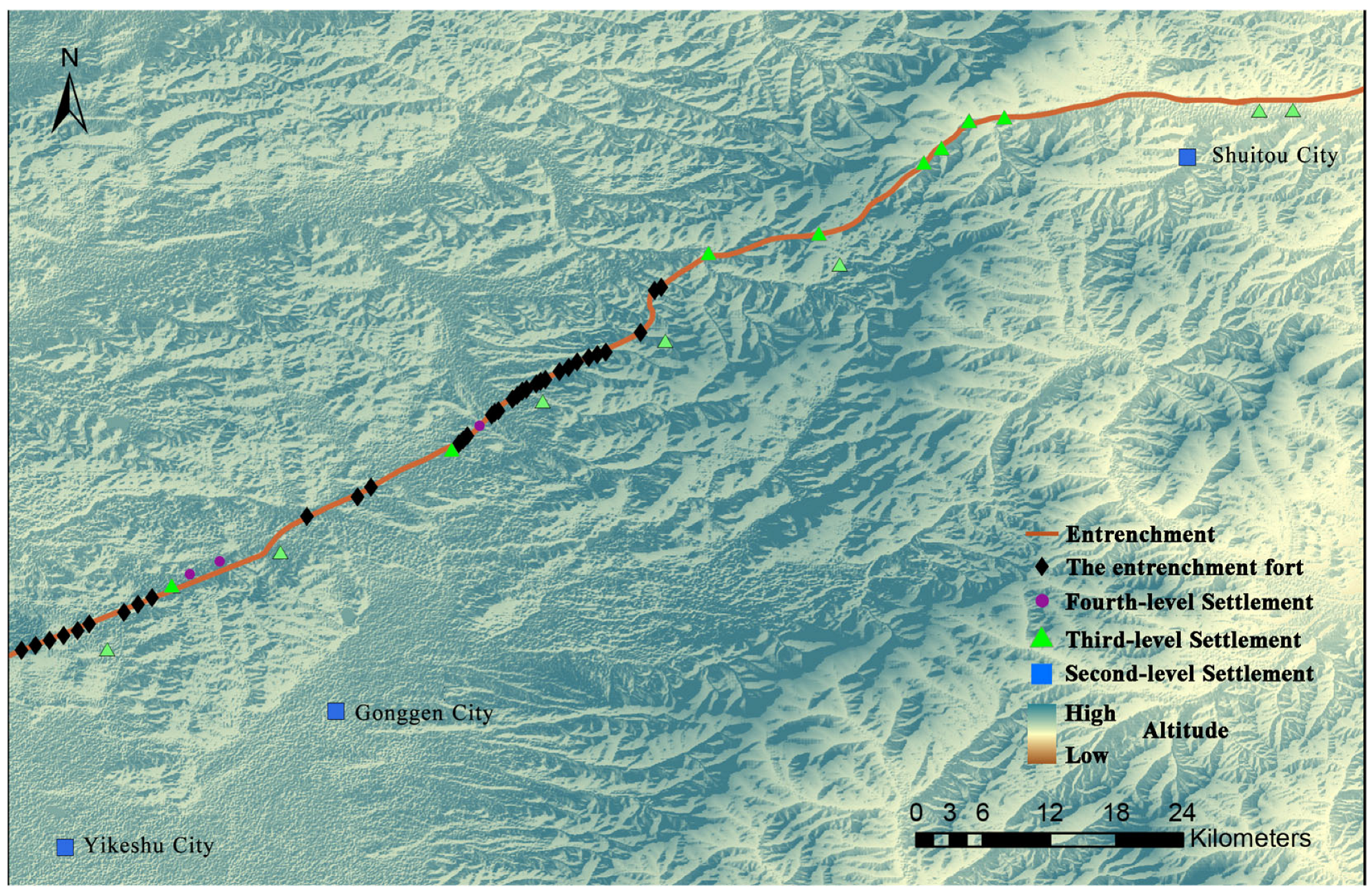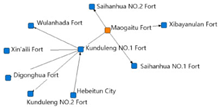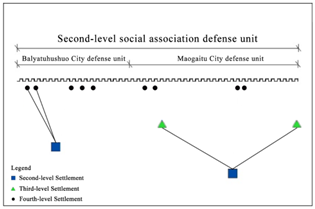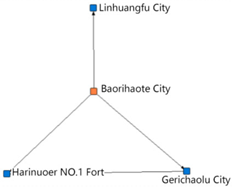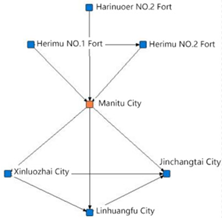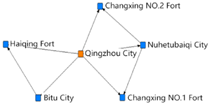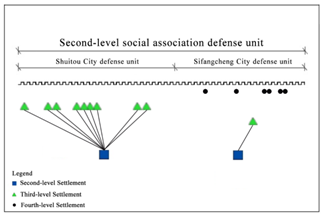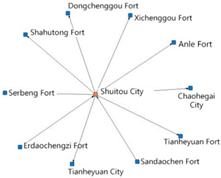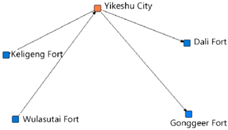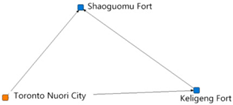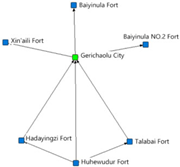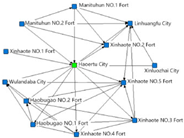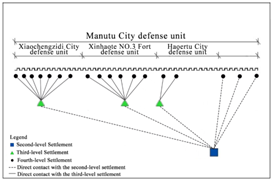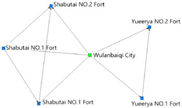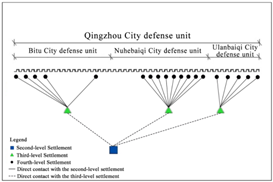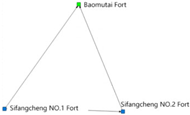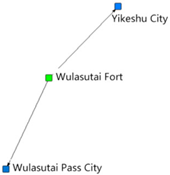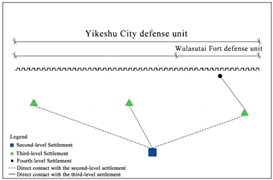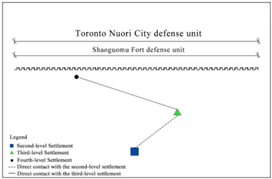1. Introduction
The Great Wall is a large-scale military defense project from ancient China. It functioned not only as a barrier to prevent the northern ethnic groups from moving south but also as a balance zone between farming culture and nomadic culture. Since the Spring and Autumn Period and the Warring States Period, many regimes have taken control of Central China and built the Great Wall on a large scale for a long time. The Qin Dynasty and the subsequent Western Han Dynasty began the early development history of the Great Wall with their farming regime. Subsequently, during the Wei, Jin, Southern, and Northern Dynasties, nomadic and semi-nomadic peoples entered Central China, and the rulers of the Northern Wei Dynasty built the Great Wall to defend the north. Since then, the Great Wall built by the non-agricultural regime has taken on an important role in the historical process. Later, the Eastern Wei, Western Wei, Northern Qi, and Northern Zhou regimes all built the Great Wall. In the Liao, Jin, and Western Xia dynasties, the Great Wall broke through the “wall defense” paradigm [
1] and generally adopted lightweight ramming technology, which was composed of entrenchments, trench walls, side forts, passes, and beacons, with a focus on the collaborative layout of multi-point defense. At the same time, stone masonry technology was also adopted in the mountain areas according to local conditions. After non-agricultural people became the builders and users of the Great Wall, the Great Wall went beyond its simple military defense function and evolved into a dynamic field of multi-civilization collision, adjustment, and symbiosis. The non-agricultural people in several dynasties created a Great Wall settlement system with military control, resource allocation, and cultural integration in the ecotone between grassland and farming. This kind of Great Wall is the Great Wall built for non-agricultural ethnic groups. Under the influence of non-agricultural civilization, the Great Wall system broke through the traditional paradigm of “the boundary between agricultural and non-agricultural regimes”, transforming linear fortifications into dynamic frontier governance media. Through the spatial strategy of multi-point linkage, they reflected the mobility of a non-agricultural society, the military thought of strategic depth, and the cultural characteristics of adaptability. However, this aspect of the Great Wall is less studied than the Great Wall built by the agricultural regime and has not received sufficient attention.
In the face of this kind of special linear heritage, with both the characteristics of non-agricultural civilization and the function of borderland governance, the research faces two dilemmas: one is the fragmentation and ambiguity of historical records, and the other is that the existing sites cannot fully present the original military deployment system and settlement system structure. In this context, we consider how to formulate a multi-angle research paradigm, and we speculate as to its military settlement hierarchical network and spatial organization logic. There has been a deepening of the value cognition of the Great Wall of non-agricultural civilization, which has become a realistic problem to be solved urgently to realize the living inheritance of cultural heritage.
The settlement system of the Great Wall is composed of several interrelated ancient defensive cities built to defend against the enemy. The structure of the Great Wall settlement system refers to the interactions and interconnections between different levels of settlements. It refers to the association, collocation, and arrangement between settlements, reflecting the internal organizational form of the system. The purpose of restoring the system structure of the Great Wall settlements is to go beyond the isolated study of a single site and reveal its essential operational logic and strategic thinking as a military defense project as a whole. By analyzing the hierarchical order, spatial arrangement, and visual correlation between settlements, we can reveal how the ancients weaved countless isolated “points” into an organic and deep defense network combining “lines” and “faces”. Clarifying the system structure provides a key basis for the overall protection of its cultural heritage.
In recent years, the research methods on settlement structure have become increasingly diversified. Li Chen analyzed the spatial differentiation characteristics of rural settlements in plateau lakes by using the Voronoi diagram and the nearest neighbor index [
2]. Zhang Lu applied the weighted Voronoi diagram to divide the influence scope of the settlements, which provided the basis for the optimization of the spatial layout of the settlements [
3]. The research methods on the settlement structure of the Great Wall have gradually expanded. There are historical documents combined with archaeological investigations to explore the distribution characteristics of settlements and the formation of their defense systems [
4,
5]. The spatial analysis method can be used to explore the characteristics of the internal structure of the settlements [
6,
7]. There is also the use of Voronoi diagram analysis to explore the spatial distribution characteristics of settlement point sets and analyze the dual fractal spatial structure of settlements [
8]. The research of foreign scholars on the Great Wall settlement is mainly based on the Hadrians Wall area, and uses GIS techniques to analyze the military structure [
9,
10]. However, the focus of research is mostly on the planning level such as settlement space layout and spatial evolution, and the single level such as settlement shape characteristics and construction characteristics. There are still gaps in the settlement level, system structure and other aspects. What kind of structure is presented in the static space between the settlements, what kind of social connections are generated in the dynamic operation of the settlement system and what kind of social association structure the system presents have not yet been addressed by current research.
With traditional research methods, it is difficult to quantify non-spatial elements and to explain the coordination mechanism or command hierarchy between different side settlements. Therefore, it is necessary to combine spatial analysis and social network analysis to interpret the settlement level and structure. Because of its unique structural research, social network analysis can accurately quantify and formally express complex social phenomena. It is an effective method to reveal the connection between settlements. Social network analysis is applied to urban economic structure research [
11], spatial structure research [
12,
13] and so on. Domestic scholars mainly use social network analysis to explore rural tourism social network [
14,
15,
16], public space reconstruction [
17,
18], spatial network structure and its optimization [
19,
20], settlement protection research [
21] and other aspects. Xie Dan and Zhang Weiya used the social network method to quantify the Great Wall settlements in the study of regional protection of the Great Wall settlements. It provides a basis for protection optimization [
22]. Although the application of this method in the special settlement system of the Great Wall settlements has not been fully explored, the existing research has proved that this method is suitable for the study of the Great Wall settlements.
Therefore, in order to explore the structure of the Great Wall settlement system under the influence of non-agricultural civilization, this paper chooses the Jin Great Wall on Linhuang Lu settlements as the research object. This paper introduces the social network analysis method in the field of sociology, and constructs the social association network between settlements from the perspective of relationships in order to accurately express the abstract connection generated during the operation of the settlement. At the same time, combined with the GIS spatial analysis method from the image, the spatial correlation structure of the settlement is analyzed. The purpose is to identify the affiliation of the Linhuang Lu settlements, divide the settlement group from the two aspects of spatial distribution and social connection of system operation, and clarify the system structure. The dual perspective analysis breaks through the limitations of previous studies only from the perspective of space, so that the relationship between the Great Wall settlements can be fully demonstrated. It provides a new research paradigm for studying the structure of other Great Wall settlement systems under the influence of non-agricultural civilization.
4. Discussion
This study found that the Linhuang Lu settlements have obvious hierarchy, which are the first-level general government settlement, the second-level Meng’an settlement, the third-level Mouke settlement, and the fourth-level Punian settlement. Through gradual analysis, the Linhuang Lu settlements were ultimately divided into 10 second-level defense units and 12 third-level defense units.
However, research has found that the settlement level in the western part of Linhuang Lu is weaker than others, especially where the number of four-level settlements is small. There is no fourth-level settlement in the Gunger grassland area between the second-level settlement Shuitou Fort and the second-level settlement Gonggen Fort. The area gradually transitions from Hunshandake sandy land to mountainous hills from west to east. One of the possible reasons is the influence of topography. The rear of this area is the tail mountain forest area of the Greater Khingan Range, that is, the northeast and southwest of the Huanggangliang Mountains in the southeast. As a natural barrier in the rear, it can prevent the enemy from entering the mainland through this area. If the northern enemy forces break through the trenches from this area, they will also continue to go south to the east–west valley plain, and this route will inevitably pass through the defense area of the Gonggen Fort.
In this section, there are small forts on the inside of the western entrenchment. They have an average side length of about 20 m and are distributed at intervals of 4–6 defense towers. They belong to the entrenchment defense system. Because the western terrain is flat and open, it is convenient for the enemy to march. Therefore, the entrenchment in this area strengthens the defense force of the front line by adding densely distributed castles. No other related settlement sites have been found in this area, so there may not be a four-level settlement. As shown in
Figure 19, there is no excessive distribution of four-level settlements in this area. The western part of Yikeshu Fort is a large sandy plain, with fewer and sparsely distributed third-level and fourth-level settlements. It is speculated that it is due to the location of Dalinor Lake there. The lake is one of the four famous lakes in Inner Mongolia and the largest lake in Chifeng City. The lake is more than one hundred kilometers long, with a total water storage of 1.6 billion cubic meters. The water depth is 10–13 m, and the area is 238 square kilometers. There are two lakes on the east and west sides of Dalinor Lake–Ganggenor Lake and Duolunnor Lake, which form the plateau lake area together. Because of the lake as a natural defensive barrier, the Jurchen people built the entrenchment near the west side of Dalinor Lake, and there was no need to build too many forts behind the entrenchment to enhance the longitudinal defense. As shown in
Figure 20, there are no over-distributed settlements in the hinterland of the trench.
The defense system of the Great Wall of the Jin Dynasty profoundly embodies the military geography thought of “adjusting measures to local conditions”. In areas with significant geographical obstacles such as steep mountain passes, natural canyons, or crisscross river systems, these natural terrains themselves have constituted an insurmountable barrier, which greatly reduces the threat of rapid raids by the enemy‘s large-scale cavalry forces. Therefore, the rulers of the Jin Dynasty did not mechanically adopt the rigid strategy of dense construction of forts on the whole line, but optimized the allocation of limited military resources. In these areas, its fortifications rely more on a small number of elite garrison forts that control key ferries, traffic nodes and commanding heights. This deployment not only saves huge construction and long-term garrison costs, but also achieves a high balance between military benefits and resource investment, fully demonstrating its superb military strategic thinking.
Previous studies have focused on using GIS spatial analysis technology to reveal the characteristics of settlement location and diachronic evolution process, which has laid a solid foundation for understanding the material and cultural representation of settlement society [
40,
41,
42,
43]. However, such studies usually regard settlements as isolated analysis units or discrete point sets in space, and fail to fully reveal the cluster relationship and connection between settlements. There are also studies that focus on restoring the structure of the settlement system, but most of them use Voronoi diagrams and site resource domains to divide the spatial influence range of the settlements. The combination of the two makes the group division of the settlements more scientific, and creates a precedent for quantifying the Great Wall settlements. However, it failed to fully reveal the inherent and dynamic military and social connections between settlements. This study introduces the theoretical framework and quantitative model of social network analysis. Different from the traditional method of describing the attributes of settlements (such as scale and shape), this study focuses on the military hierarchy, geographical environment and other multiple relationships among settlements, and constructs them in a network system that can be quantitatively analyzed. This study not only verifies the “Meng’an-Mouke” hierarchical management system recorded in the literature, but also scientifically identifies the affiliation between settlements and the division of defense units in combination with spatial analysis. The contribution of this study is to break through the limitations of static and fragmented traditional research. From the meso-scale of system structure. It provides a new perspective, new method and new evidence to understand the operation logic of settlement system, and provides a scientific basis for the overall protection of the heritage.
Although this paper preliminarily restores the structure of the Great Wall settlement system in Linhuang Lu, there are some shortcomings. In terms of the classification of settlement levels, due to the large number of settlements in the study area and the destruction or non-existence of some settlement sites, there may be information missing in the process of information collection and data transformation, which affects the accuracy of settlement level division. In the application of the method, the selection of social association influence factors is not comprehensive enough. The operation of the Jin Great Wall settlements involves complex social connections, such as mutual trade, army farming and other activities [
44]. These contextual connections have not yet been fully incorporated into the analytical framework. Due to the limitations of current historical materials and archaeological excavations, it is not enough to fully measure the correlation between settlements. It is believed that in the future, with the deepening of the excavation of historical materials related to the northwest frontier defense of the Jin Dynasty in the field of history, the discovery of more historical materials will provide richer evidence for the study of settlements. We must also further improve the reduction in the structure of the settlement system and enhance the scientific and systematic nature of the research.
The research paradigm of this paper combines spatial analysis and social network analysis, and reveals the system structure of the Great Wall settlements through a multi-level perspective. These methods are not only applicable to the settlement of the Jin Great Wall on Linhuang Lu, but also can be applied to other Great Wall settlements in the Jin Dynasty, as well as the study of the Great Wall settlements of non-agricultural or agricultural regimes. The weighted Voronoi diagram is used to determine the control range of settlements, especially in areas with complex terrain or dense settlements. However, it is necessary to adjust the weight parameters according to the differences in settlement functions, such as the horizon weight of the beacons in the Han and Ming dynasties, the weight of the scale of the garrison, etc. The spatial coupling degree can also be tested by the weighted Voronoi control range and the historical garrison activity radius. The analysis of social connections in social network analysis can be transformed into military and political system variables of different civilizations. For the Great Wall settlements with comprehensive historical records and surviving sites, the correlation of administrative subordination, military command, inter-market trade and transportation routes can be added, so as to comprehensively construct the relationship network between settlements. For sites with incomplete historical data, it is necessary to combine remote sensing archaeology and social organization models to make up for the data gap of social network analysis. This method is applicable to the Great Wall settlements with complex social networks or multi-level defense systems.
With the continuous attention of the world to cultural undertakings, the deepening of settlement-related research, the protection of the Great Wall site has been continuously strengthened. More and more historical materials related to the Great Wall of non-agricultural civilization will be excavated and analyzed, which will provide historical evidence for its basic theoretical research and protection research. More archaeological excavations of the Great Wall settlements will provide more physical data for settlement research, jointly help to determine many current uncertain views, solve the problems that have not yet been studied, and make up for the shortcomings of this study.
